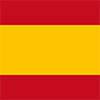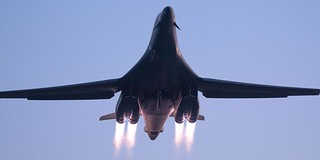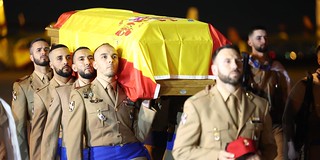Fokker F-27 Maritime, the excellent airplane of Dutch origin that saved lives in Spain
You realize that you have already accumulated many years when you have to write an article about this excellent airplane using past tense verbs.
The Fokker F-27 made its first flight on November 24, 1955. The Dutch company that manufactured it became famous during the First World War for making excellent fighters such as the Fokker D.VII and the Fokker DR .1, used by some German aviation aces. Confiscated by the Germans during the Second World War, Fokker restarted its production in the Netherlands, manufacturing jet aircraft, with piston engines and turboprops, with notable success.

The Fokker 27 was one of that company's best products. Designed as a regional airliner, it was equipped with two Rolls-Royce Dart turboprop engines. It could fly at a cruising speed of 460 km/h with a range of 2,600 km. This model was a bestseller, with almost 800 units being manufactured over three decades (including those manufactured under license by Fairchild in the US), which were sold not only to civil operators, but also to armed forces, among others. them the US Army and Navy.
Today, the Fokker 27 is still in service with many civil and military operators. In Spain it was used by several airlines (Aviaco, Iberia, Seven Air, Spantax and Trans-Europa). Thus, it was a very common plane in Spanish airports, covering regional flights. The Air Force decided to acquire it in 1978 to replace its old Grumman HU-16 Albatross seaplanes in maritime surveillance and search and rescue (SAR) missions, acronyms that would appear in large yellow letters on their fuselages.

Due to the nature of its mission, the first three aircraft were acquired by the General Directorate of Civil Aviation, being assigned to the 802 Squadron of the Air Force, based in Gando, on the island of Gran Canaria . As Captain Fernando Somovilla explained in the Revista de Aeronáutica y Astronáutica number 831 in March 2014, the first Fokker F-27-200 MAR Maritime of the Air Force was the D.2-02 (cn 10581), which arrived on the 28th February 1979, on a direct flight from the Fokker factory in the Netherlands. Subsequently, a second aircraft, the D.2-01 (cn 10581) and a third, the D.2-03 (cn 10587), arrived in July 1979. The three aircraft accumulated a total of 50,371:45 flight hours and more than 300 departures during 34 years of service.
During that long period of service, the F-27 carried out one of the most valuable missions with the 802 Squadron: "It has contributed to saving a multitude of lives in the seven Canary Islands and in its 1,500 .00 km2 of surrounding waters, carrying out great work for Canarian society from the beginning," Captain Somovilla pointed out in that article. Furthermore, "in the 80s and 90s it made a large number of flights evacuating injured or sick people who required hospitalization from the smaller islands to the larger ones, since in those years only the provincial capital islands They had hospitals with capacity for all types of surgeries and major interventions."

In addition to this work, the F-27s of the 802 Squadron collaborated with the Customs Surveillance Service, with Maritime Rescue and the Civil Guard combating drug trafficking, illegal human trafficking and marine pollution. The end of the F-27 in the Air Force came on December 13, 2013, with the retirement of the last active aircraft of this type, the D.2-03. The F-27 was relieved of its duties by the CASA CN-235 VIGMA.
After their withdrawal from service, the three F-27s of the Air Force were taken to the Cuatro Vientos airfield, in Madrid. From the data I have been able to gather from different websites, all three are still there. D.2-02 is stored in a hangar, while D.2-01 and D.2-03 are parked outside, near the old control tower, waiting to be displayed. at the Air Museum, located a short distance away. The D.2-01 is parked next to a CASA C-212-200 maritime surveillance and rescue, the D.3B-04. This Friday, Fly By Wire Aviation has published a video showing the D.2-01:
You can see here some details that can be seen in the video. Here we see one of the F-27's Rolls-Royce Dart engines, specifically the port engine. An excellent engine that was in production from 1948 to 1987, incorporating successive improvements.

One of the external tanks that the F-27 carried under the wings, specifically the one located under the port wing. These tanks allowed the already notable range of action of this aircraft to be expanded.

A curiosity about these planes is that they showed the Spanish Flag on their rudders, but not the Saint Andrew's Cross or the Spanish cockade that are typical of the Air Force aircraft, a custom of the 802 Squadron since its origins, perhaps due to the particular nature of its search and rescue mission. This characteristic decoration disappeared in 2020. Otherwise, the effects of a decade spent outdoors can be seen on this plane: its gray color, the colors of the Spanish Flag and the letters SAR have become lighter.

|
Don't miss the news and content that interest you. Receive the free daily newsletter in your email: |
- Most read
- The brutal 'touch and go' of a Lufthansa Boeing 747 at Los Angeles Airport
- US F-35A fighters flying with Polish F-16s over Poland at a time of great tension
- Eurofighter vs F-35: the opinions of professional pilots on these advanced fighters
- A Spanish pilot shows one of the C-295M of the 353 Special Operations Squadron
- An American airman used a Flag of Spain to direct a B-1B Lancer bomber
- The firearms used by the Pontifical Swiss Guard, the smallest army in the world
- Sierra Army Depot, a huge United States base with hundreds of Abrams tanks stored

 ES
ES







Opina sobre esta entrada: